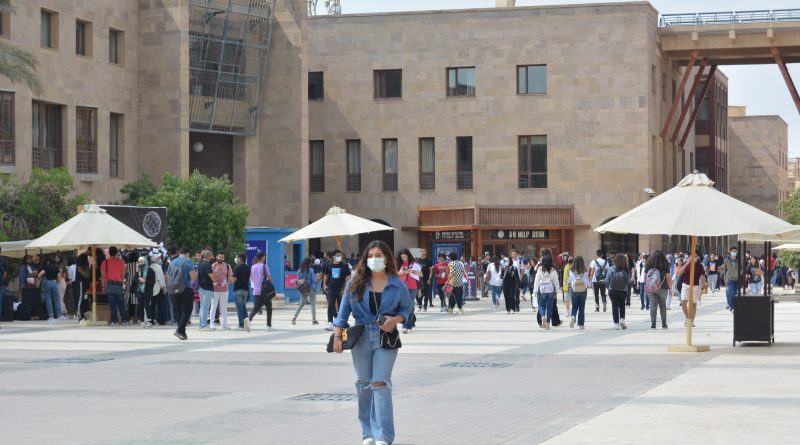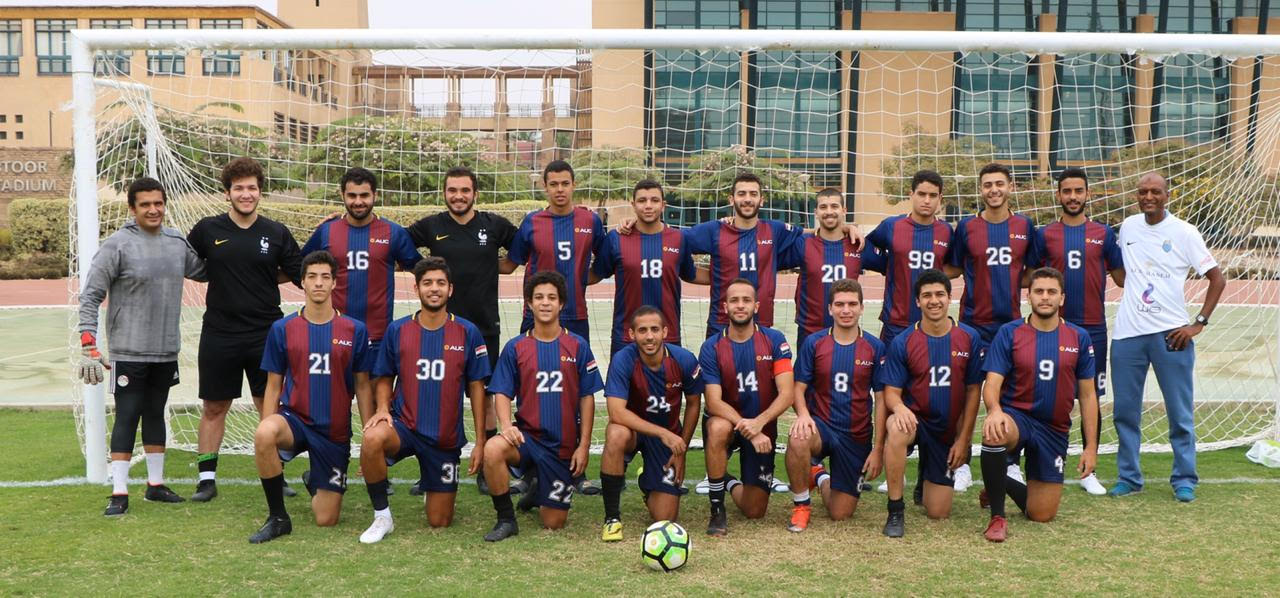Taskforce Worked Behind The Scenes to Prep for Campus Return
By: Maya Abouelnasr
@EmEn1125
The fall 2021 semester ushered in a return to face-to-face learning with the New Cairo campus coming close to the pre-COVID-19 normalcy we’ve been looking for: students running to classes, chatting about their schedules and socializing while standing in long queues at various food outlets.
None of this, however, would have been possible without the extensive planning behind the scenes by the Academic Mission Committee (AMC).
The AMC was formed in March 2020 following the outbreak of the first wave of COVID-19 and was divided into two task forces. The first was responsible for the shift to online instruction and later, the return to campus. The other has been responsible for monitoring trends that could affect academics at AUC post-COVID-19, such as new teaching innovations.
Former Associate Provost for Strategic Enrollment Management Ahmed Tolba, who is also the chair of the first task force created in March 2020, explained that the team had two main objectives.
“We wanted to balance the quality of education and the student experience and at the same time, [ensure] the safety and health of the community,” Tolba told The Caravan.
He added that while there has been an increase in vaccinated members of the community through AUC’s efforts, safety measures had to remain in place.
“We were not comfortable with going for zero social distancing or one-meter social distancing inside the classroom [instead of two meters] where ventilation is okay, as we cannot guarantee that all classrooms have perfect ventilation,” Tolba said.
He explained that this rationale led them to the decision of a one-and-a-half meter social distancing rule with mandatory wearing of masks inside classrooms.
One of the challenges that the team faced was the fact that only eight out of 140 classrooms on campus are considered “large” and can accommodate over 25 students, with the one-and-a-half meter distancing rule being implemented.
To navigate this challenge, the AMC devised three key steps in cooperation with the Management and Operations team.
The first step consisted of examining enrollment history of the courses held in larger classrooms and determining whether they tended to be filled to capacity to decide if they could be moved to medium-sized classrooms.
The second step involved asking departments to allocate more time slots in the teaching schedule to accommodate larger classes. As a result, around 80 courses were rescheduled to meet on Tuesdays and Saturdays.
The third and final step involved cooperating with various departments such as IT and the Center for Learning and Teaching (CLT) to apply the dual-delivery modality to some of the
larger-sized courses. In this mode, half of the class attends in person while the other half attends over Zoom. The two groups would then rotate and switch places throughout the week.
Associate Professor of Practice and Director of CLT Hoda Mostafa explained that the dual-delivery classrooms were initially a pilot project that began in spring 2021 to help her team identify issues with the modality prior to implementing it on a wider scale in fall 2021.
“We realized there were some issues around the sound quality and engagement in the classroom. So, we refurbished and renovated these [nine dual delivery] classrooms over the summer. They now have microphones, with the video and the sound padding carpets installed,” Mostafa told The Caravan.
She added that the CLT’s main objective has always been to provide faculty with the necessary support and tools to give students the best possible learning experience, which has especially been the case during these challenging times.
Associate Provost for Transformative Learning and Teaching at CLT Aziza Ellozy believes there are potential benefits of continuing to use dual delivery in a post-COVID world.
“The simplest thing is that if a student in general is sick, typically what they do is that they skip the day and then they have to catch up. If there is dual delivery and of course they [the students] are not so sick that they can’t look at their computer, then they won’t miss anything because they are following it up,” Ellozy told The Caravan.
She added that another advantage of dual-delivery could be creating a more diverse community and potentially having guest professors.
“In different fields, there are experts who are willing to give an hour of their time to lecture [at a different university], but are not willing to fly to Cairo to lecture for a day or two and go back. It’s expensive and it’s time consuming. So, it can be done remotely,” Ellozy said.
She further explained that this modality could also be beneficial in connecting full-time Egyptian students at AUC with more international students, alongside allowing these students from different universities worldwide to attend classes at AUC that they are interested in without needing to travel.
But the dual modality approach hasn’t been without its technical glitches and growing pains.
In the first two weeks, students and faculty using the dual-delivery modality complained of audio and video hiccups, as well as difficulty connecting to Wi-Fi.
“Ninety percent of the lecture, we didn’t hear anything. When we heard anything, we couldn’t see anything. In some cases, the doctor would write on the board and using the camera that was at the back, we couldn’t really see anything,” Computer Engineering junior Kirolos Mikhail said.
Many of these challenges have since been fixed.
The Caravan contacted IT on campus for comment but did not hear back at press time.



